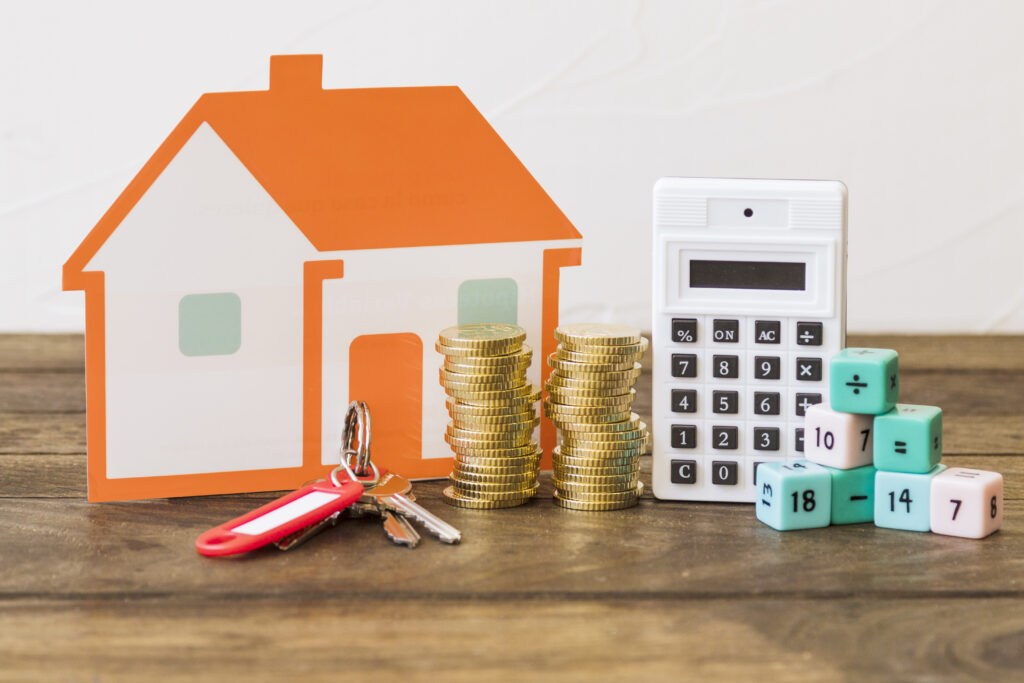The decision to embark on a home improvement loan project is often rooted in profound personal anticipation—the long-desired kitchen update, the essential roof replacement, or the need for more living space. Yet, the emotional drive of renovation must be immediately grounded by a sophisticated financial strategy. Securing the optimal financing is not a mere formality; it is the most critical decision that dictates the total cost, the exposure to financial risk, and the available tax benefits over decades.
The term Home Improvement Loan (HIL) acts as an umbrella, covering a complex landscape of distinct debt products. Successfully navigating this landscape requires moving past advertised interest rates and understanding the true cost of borrowing, including closing costs, hidden penalties, and strict adherence to federal tax regulations. This comprehensive guide details how to choose the right financial instrument, optimize your qualification profile, and strategically leverage available tax advantages for your next Home Improvement Loan project in the United States.
I. Deconstructing Home Improvement Loans Options: Secured vs. Unsecured Financing.
The fundamental choice in financing your project is whether to utilize secured financing—using your property equity as collateral—or an unsecured personal loan. Secured options typically offer lower interest rates but impose risk on your home, while unsecured loans prioritize speed at a significantly higher cost.
A. Secured Loans: Leveraging Home Equity for a Home Improvement Loan
Secured loans are the preferred method for large-scale Home Improvement Loan projects because they allow you to tap into the accumulated value of your home, reducing the lender’s risk and accessing the most favorable terms.
1. Home Equity Loan (HEL) — The Fixed-Rate Predictor
A Home Equity Loan (HEL) is structured as a second mortgage, providing the borrower with a single, predictable lump sum of cash. Its defining feature is a fixed interest rate and a fixed repayment schedule over the life of the loan.
This fixed structure is invaluable for defined, large projects, providing insulation from broader financial market fluctuations. For instance, reflecting late 2025 stability, the national average interest rate for a 15-year Home Equity Loan averages 8.10% (with rates ranging from 6.50% to 10.75%).1 For borrowers who prioritize predictable long-term costs and budget stability, the fixed HEL is often the strategic choice for a Home Improvement Loan investment.
2. Home Equity Line of Credit (HELOC) — The Flexible Variable
A HELOC is a revolving credit line, ideal for staged renovations where costs fluctuate. You draw funds as needed up to a set limit during a draw period (often 10 years).
The primary risk in a HELOC stems from its typically variable interest rate, which adjusts based on changes in the prime rate. While current average HELOC rates sit around 7.90%, borrowers must carefully consider the potential for “payment shock.” Initial low, interest-only payments during the draw period often increase significantly when the mandatory principal and interest repayment phase begins, a risk a fixed-rate HEL avoids.2
3. Cash-Out Refinance — The Comprehensive Solution
A Cash-Out Refinance replaces your existing primary mortgage with a new, larger loan, paying the difference in cash. While it can offer the lowest blended interest rate, it carries the highest closing costs and requires resetting the clock on your entire mortgage debt, potentially extending repayment back to 30 years.3 This option is best reserved for extremely large projects that necessitate replacing the original primary mortgage.
B. Unsecured Personal Loans — Speed, Simplicity, and Cost
Unsecured personal loans are not backed by any collateral. They offer speed and simplicity, making them ideal for smaller, non-structural projects (typically under $30,000) or for borrowers who do not possess substantial property equity. However, due to the higher risk, the Annual Percentage Rates (APR) on unsecured loans are typically significantly higher than those for secured Home Improvement Loan options.
| Financing Type | Rate Structure | Funding Structure | Ideal Project Scope | Primary Risk |
| Home Equity Loan (HEL) | Fixed | Lump Sum | Defined, large, one-time renovations | Secures debt against the home |
| Home Equity Line of Credit (HELOC) | Variable (usually) | Revolving Line | Staged renovations; fluctuating costs | Rate volatility; payment shock |
| Unsecured Personal Loan | Fixed/Variable | Lump Sum | Small, non-structural projects | Highest APR |
II. Financial Due Diligence: Qualification, Compliance, and the True Cost
A. Key Qualification Criteria: Optimizing Your Application
To secure the most competitive rates for your Home Improvement Loan, you must strategically optimize your financial profile. Lenders prioritize three key metrics:
- Credit Score Leverage: Borrowers with a FICO score of 780 or higher are typically offered the most favorable rates. If your credit score is in the mid-600s or below, you must expect to receive much higher APRs.
- Loan-to-Value (LTV) Ratio: Lenders prefer LTV ratios around 77% or lower, though some HELOC products are available for customers with LTVs up to 95%.
- Debt-to-Income (DTI) Ratio: Approved borrowers often maintain a DTI ratio below 40%. High DTIs signal potential strain on your ability to handle the additional debt, making approval less likely or rates higher.
B. The True Cost of Borrowing: Fees and Closing Costs
When analyzing a Home Improvement Loan, the stated interest rate is not the true cost. Secured loans incur mandatory closing costs and potential penalties that inflate the overall APR.
- Origination Fees: These cover the administrative costs of processing the loan and typically range from 0.5% to 1% of the total loan amount.
- Appraisal and Title Costs: Expect appraisal fees between $600 to $2,000, plus title search and insurance costs to verify the home’s value and legal standing.
C. The Borrower’s Ultimate Protection: Mandatory Financial Disclosure Anchor
This informational content is provided as an objective resource, not a direct lender. In keeping with high standards of financial transparency and strict compliance with U.S. regulatory guidelines regarding the promotion of financial services, particularly those mandated by Google AdSense policies, it is necessary to establish immediate, visible disclosures.
For any specific lender or financial product advertised or linked from this content, the following disclosures must be clearly and immediately visible on the landing page without requiring the user to click or hover:
- The full physical address for the business offering the financial product or service.
- All associated fees related to the loan.
- The minimum and maximum period established for loan repayment.
- The Maximum Annual Percentage Rate (APR), calculated consistently with local law.
- A representative example illustrating the total cost of the loan, including all applicable fees (as detailed below).
Representative Example of Total Cost for a Secured Home Improvement Loan
This example is illustrative and does not represent a commitment to lend. The actual Maximum APR, repayment period, and fees must be finalized and disclosed by the specific lender prior to signing.6
| Product Parameter | Disclosure/Calculation |
| Product Type | 15-Year Home Equity Loan (Secured Home Improvement Loan) |
| Loan Amount | $50,000 |
| Minimum Repayment Period | 60 months (5 years) [8] |
| Maximum Repayment Period | 180 months (15 years) [8] |
| Maximum Potential APR (Hypothetical Max for Compliance) | 11.99% 6 |
| Interest Rate Used in Example (Based on late 2025 average) | 8.10% APR |
| Estimated Fees (Origination, Appraisal, Title) | $2,000 |
| Calculated Monthly Payment (Principal & Interest) | $478.43 |
| Total Interest Paid Over 15 Years | $36,117 |
| Total Cost of Loan (Principal + Interest + Fees) | $88,117 |
III. Advanced Financial Strategy: Tax Efficiency and Critical Pitfalls
The financial impact of a Home Improvement Loan extends far beyond monthly payments; it includes crucial tax advantages and severe penalties that must be managed strategically.
A. Interest Deductibility: Mastering the Purpose Test
Under current U.S. tax law, the tax deductibility of interest rate paid on a loan secured by a home is restricted. The interest is only deductible if the loan proceeds are used to buy, build, or substantially improve the residence that secures the debt.
This introduces a crucial “purpose test.” If you use a Home Improvement Loan for purposes unrelated to the home (e.g., consolidating debt), the interest is not deductible. You must meticulously track the use of all borrowed funds to ensure you can claim this benefit, and the total deductible primary mortgage interest is limited to the interest paid on the first $750,000 of indebtedness.
B. Capital Improvements vs. Routine Repairs
For tax purposes, you must distinguish between general repairs and capital improvements.
- Capital Improvements: Expenses that add tangible value, prolong the home’s life, or adapt it to new uses (e.g., a new roof, adding central AC). The costs are added to the home’s cost basis, which ultimately reduces the taxable capital gain realized when the home is sold.
- Repairs: The cost of routine maintenance (e.g., painting a room, fixing a gutter) cannot be added to the cost basis.
C. The 401(k) Pitfall: Avoidance and Penalties
Financial analysts strongly caution against using early withdrawals from qualified retirement plans (such as 401(k)s or IRAs) to fund general home improvement projects.
The IRS imposes a severe 10% additional early distribution tax on withdrawals made before age 59.5, in addition to standard income tax liability. It is critical to understand that there is no federal exception to the 10% penalty for funds used for general Home Improvement Loan projects. This cumulative taxation makes early retirement withdrawal the most financially expensive and strategically damaging method of funding renovations.
IV. Final Checklist: Securing Your Optimal Home Improvement Loan
Before finalizing your financing, execute this checklist to ensure you have secured the optimal Home Improvement Loan structure:
- Lender Selection: Investigate local credit unions due to their historical advantage in offering lower interest rates and personalized service compared to national banks.
- Rate Scrutiny: Do not rely on the initial interest rate. Factor in all closing costs and fees to calculate the true APR.
- Penalty Check: Scrutinize the contract for prepayment penalties (which can be 2% to 5% of the outstanding balance) or early cancellation fees, especially if future refinancing or selling is anticipated.
- Tax Compliance: Plan for meticulous fund tracking to utilize tax deductibility for the capital improvements you make.
By adopting this disciplined approach, you ensure your Home Improvement Loan is structured to enhance your property equity while safeguarding your long-term financial health.
FAQs
Is a renovation loan a good idea?
A: Yes, a renovation loan (especially a secured Home Improvement Loan like a fixed-rate Home Equity Loan) is generally a good financial idea for large, defined projects, as it provides a predictable repayment structure. Renovation projects like a minor kitchen remodel often yield a high ROI, recouping around 96% of the cost in increased home value.
What is the 30% rule for renovations?
A: The “30% rule” commonly refers to the legal limitation on upfront payments to contractors. In many U.S. jurisdictions, the law prohibits a contractor from demanding an upfront deposit or down payment that exceeds one-third (33.3%) of the total contract price before work begins. Demanding more than 30–50% upfront is a major financial red flag.
Can I borrow money to renovate?
A: Yes, you can borrow money for renovations using several financial products categorized as Home Improvement Loans. The most common options include secured loans, such as a Home Equity Loan (HEL) or a Home Equity Line of Credit (HELOC), which leverage your property equity as collateral.
Which bank is best for a renovation loan?
A: Local credit unions often provide distinct advantages over national banks. Because credit unions are non-profit organizations, they typically offer lower average interest rates and fewer fees on Home Improvement Loans and may tailor loan packages better to specific project needs than larger commercial banks.
Lowest Renovation Loans Interest Rates (2025-2026) ?
A: As of late October 2025, average interest rates for fixed-rate secured Home Improvement Loans (Home Equity Loans) are around 8.10% for 15-year terms, and variable-rate HELOCs average 7.90%. However, the lowest competitive rates (starting around 5.49% to 6.50%) are typically reserved for applicants with exceptional credit scores (780 or higher).
Conclusion: Securing Your Financial Resilience
Securing the optimal Home Improvement Loan requires meticulous strategy that extends far beyond searching for the lowest interest rates. Your financial success hinges on prioritizing secured financing to safely leverage property equity, while diligently calculating the true cost by factoring in closing costs and the total APR.
You must master the critical tax deductibility “purpose test” to realize the full benefits of your investment. By adopting this disciplined, knowledge-driven approach, you ensure your Home Improvement Loan enhances your long-term wealth rather than compromising your financial security.



